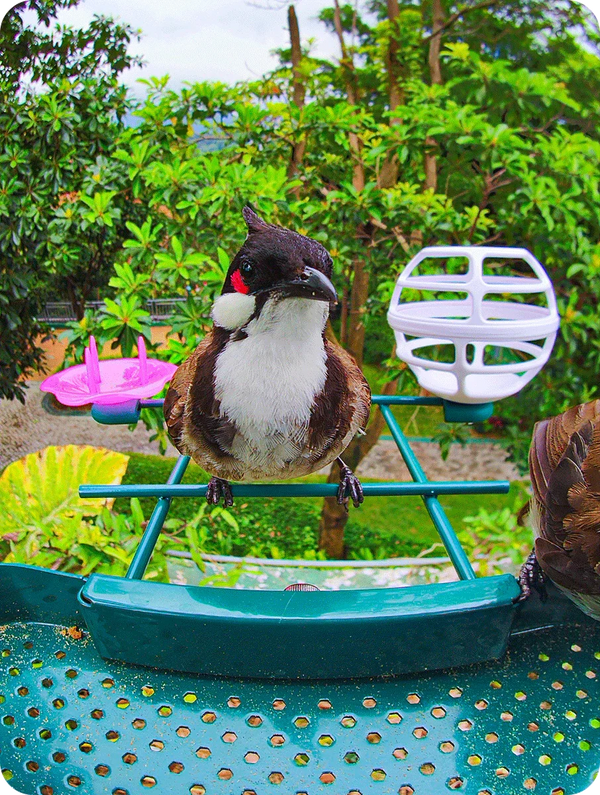Unlock the Secrets: Discover the Irresistible Birds That Love Suet Feeders!
Suet feeders have become a staple for bird enthusiasts eager to invite a flurry of feathered friends to their gardens. These specialized feeders, designed to hold suet, a high-energy food made from animal fat, attract a delightful variety of birds, enhancing the natural beauty of your outdoor space. Attracting birds not only provides you with endless entertainment, but it also plays a vital role in their nutrition, especially during colder months when food is scarce. Join us as we explore the fascinating world of suet feeder birds and discover which species are drawn to them like moths to a flame!

Understanding Suet Feeders
Suet is a vital food source for many birds, packed with essential fats and proteins that provide the energy they need to thrive, particularly in winter. Suet feeders come in various designs, from simple mesh bags to elaborate cages that keep the suet secure while allowing birds to access it easily. The best practices for using suet feeders include placing them in locations that are visible to birds while also being safe from predators. Regularly checking and replenishing the suet is crucial to ensure that your avian visitors have a reliable food source, fostering a consistent birdwatching experience.
Bird Species That Love Suet Feeders
Suet feeders are a magnet for a wide array of bird species, each with unique characteristics and behaviors that make them fascinating to observe. Woodpeckers, with their vibrant plumage and distinctive tapping sounds, are among the most common visitors. These birds, along with nuthatches and chickadees, showcase an array of feeding styles, often clinging to the feeder while they peck at the suet. Jays, known for their intelligence and striking colors, also find suet irresistible. Understanding what attracts these birds can enhance your feeding experience and help you appreciate their natural behaviors.
Woodpeckers
Woodpeckers are among the most enthusiastic suet eaters. Species like the Downy Woodpecker and the Hairy Woodpecker are frequent visitors to suet feeders. They use their strong beaks to drill into the suet, often hanging upside down to access every morsel. To attract woodpeckers to your suet feeder, consider using a feeder that allows them to cling easily and is positioned near trees or utility poles where they feel safe. Observing their feeding habits can be a real treat, as they often engage in playful interactions with one another.
Chickadees and Nuthatches
Chickadees and nuthatches are small, agile birds that bring a delightful energy to any backyard. Chickadees are known for their curious nature and will often take a piece of suet away to eat in a nearby tree, while nuthatches display a unique behavior of storing food for later use. Both species are attracted to suet as a high-energy food source, especially during the winter months. To increase your chances of seeing these charming birds, place suet feeders in areas where they can easily spot them and feel secure.
Other Notable Visitors
Other bird species that may visit your suet feeders include wrens, orioles, and even some sparrows. These birds are drawn to the high-fat content of the suet, especially during times when insects are less available. While not as frequent as woodpeckers or chickadees, spotting these other delightful visitors can add variety to your birdwatching experience. Each species brings its own charm and characteristics, enriching the diversity of your backyard ecosystem.
How to Attract More Birds to Your Suet Feeders
To maximize the number of birds visiting your suet feeders, consider several strategies that can enhance your setup. The placement of your feeders is crucial; they should be located in a quiet area, close to trees or shrubs that provide cover and safety. Additionally, experimenting with different types of suet can attract a wider variety of birds, as some may prefer fruit-flavored suet while others might go for nut blends. Seasonal considerations also play a role in your feeding strategy; adjusting the type of suet based on the time of year can help keep your feeders busy.
Optimal Location and Placement
The ideal location for suet feeders is typically within view of a window, allowing you to enjoy the activity from indoors. Placing feeders near natural cover, such as bushes or trees, gives birds a sense of security, encouraging them to visit more frequently. It's also beneficial to avoid areas with heavy foot traffic or disturbances that may scare them off.
Seasonal Tips
As the seasons change, so should your feeding strategies. In winter, high-fat suet is essential for energy, while in spring and summer, incorporating suet with added seeds or insects can cater to the reproductive needs of birds as they feed their young. Additionally, adjusting the frequency of refilling the feeders based on seasonal bird activity can help you maintain a lively feeding station throughout the year.
Enhancing Your Backyard Birdwatching Experience
In summary, suet feeders offer an excellent way to attract a variety of birds to your backyard, providing both joy and a vital food source for these creatures. By understanding the types of birds that love suet, and employing strategic feeding practices, you can create a thriving environment for your feathered friends. Give suet feeders a try in your own backyard, and you may find yourself captivated by the colorful visitors they bring!








